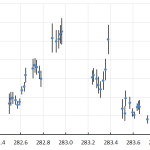Mira Str.40-2, 222307, Molodechno, Belarus
astroseriv@yandex.by
Abstract: This article presents the results of radio observations made in January 2022. The results of the radio observations are compared with the CAMS video network summaries.
1 INTRODUCTION
The observations were carried out at a private astronomical observatory near the town of Molodechno (Belarus) at the place of Polyani. A 5 element-antenna directed to the west was used, a car FM-receiver was connected to a laptop with as processor an Intel Atom CPU N2600 (1.6 GHz). The software to detect signals is Metan (author – Carol from Poland). Observations are made on the operating frequency 88.6 MHz (the FM radio station near Paris broadcasts on this frequency). The “France Culture” radio broadcast transmitter (100 kW) I use is at about 1550 km from my observatory which has been renewed in 1997.
2 Automatic observations
The primary maximum of the Quadrantids (#0010) was recorded at the interval 12h–14h UT on 03 January 2022 (Figure 1). The secondary peak occurred at the interval 22h–00h UT on the night of January 3 to 4. This secondary peak coincides with that predicted by the IMO (Rendtel, 2021).
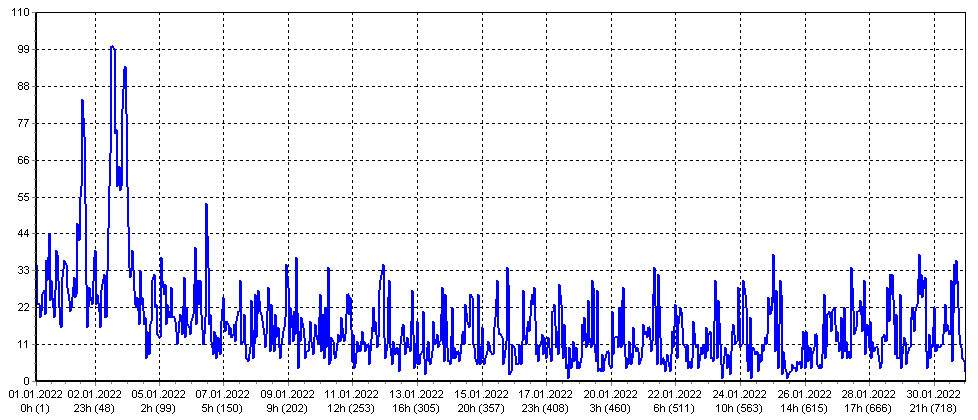
Figure 1 – Radio meteor echo counts at 88.6 MHz for January 2022.
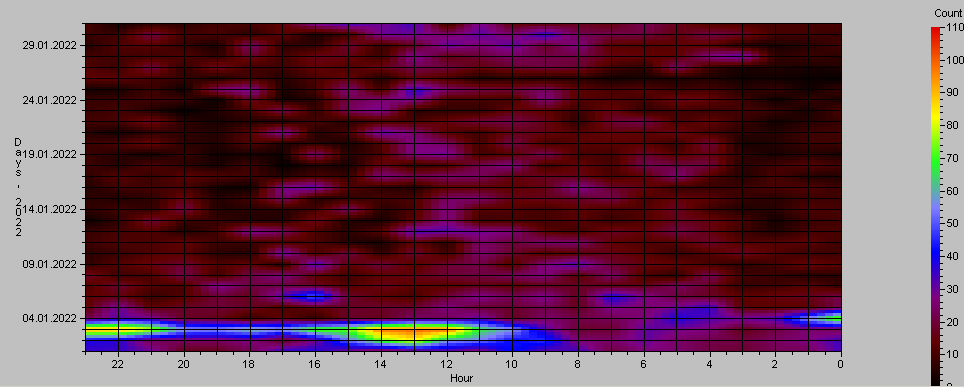
Figure 2 – Heatmap for radio meteor echo counts at 88.6 MHz for January 2022.
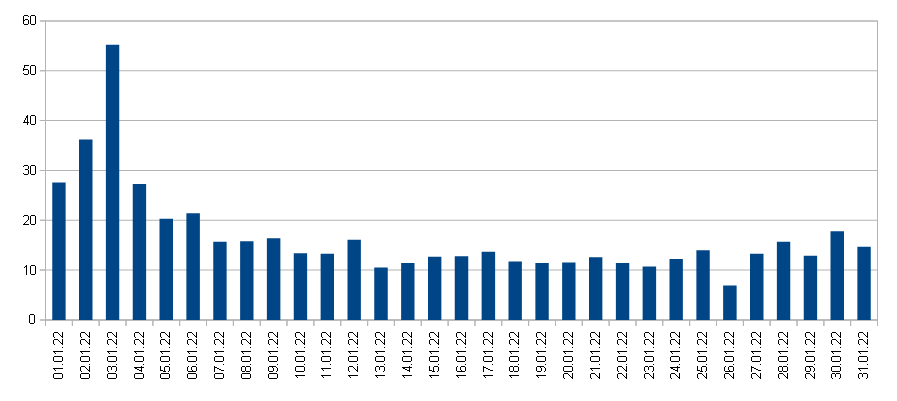
Figure 3 – Average hourly activity of meteor echo signals at 88.6 MHz in January 2022.
3 Listening to radio echoes on 88.6 MHz
In order to save observation time and to increase the efficiency of listening to the radio meteor echoes in order to obtain a more complete observation series, I made a modification to the method with the introduction of a definition of “synthetic” hourly rate numbers (Figure 4).
Listening to the radio signals for 10 minutes with extrapolation of the data to 1 hour was done about 3 to 5 times a day. This was done in order to control the level of the hourly rates as well as to distinguish between periods of tropospheric passage and other natural radio interference. The total effective listening time was 108 synthetic hours. The hourly calculated data are given in order to compare with the hourly activity values obtained by the method of automatic hourly signal detection.
The maximum signal activity was recorded in the afternoon of January 3. This could mean that the Earth first crosses parts of the meteoroid stream dominated by mainly very small particles.
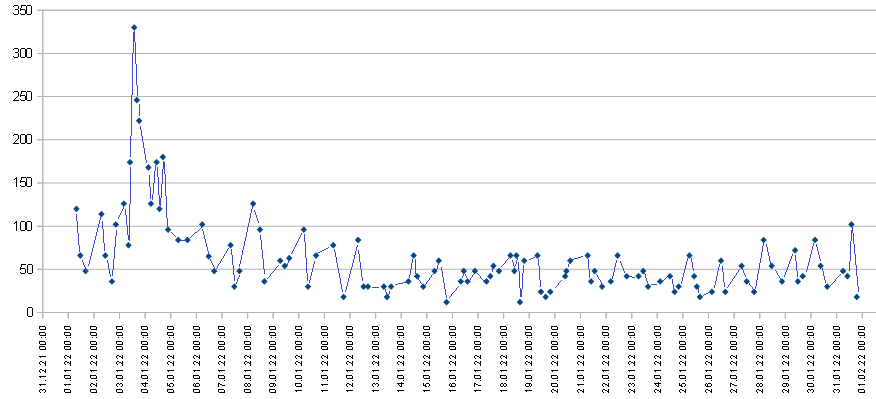
Figure 4 – The result with the calculated hourly numbers of echoes of meteors by listening to the radio signals for January 2022.
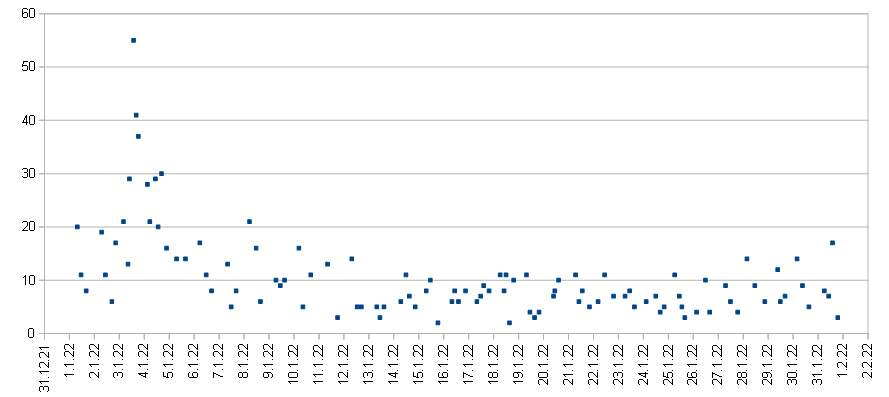
Figure 5 – The result with the actual ten-minute meteor echoes when listening to radio signals for January 2022.
4 Preliminary CAMS Data
Figure 6 shows the total daily activity of meteor orbits obtained by the CAMS video networks data (Jenniskens et al., 2011). For January there is a noticeable correlation between the activity level of sporadic meteors and the activity level of shower meteors. I used the preliminary CAMS data as available on the website on February 23, 2022. In addition to the traditional Quadrantids (QUA, #0010) high on January 3, the chart shows weak peaks in showers activity on January 13, 21,28–29.
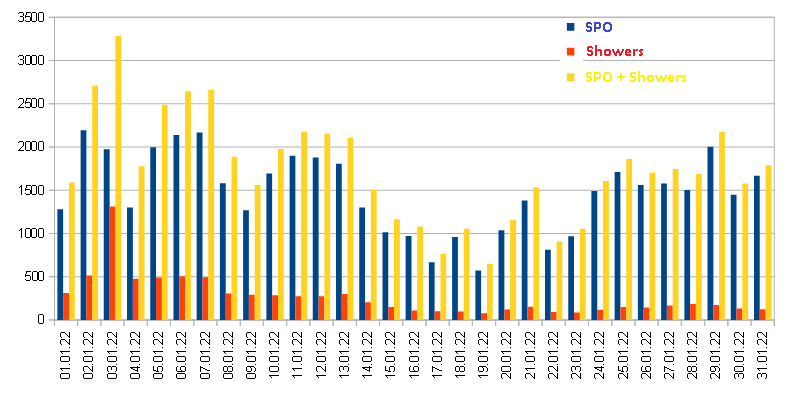
Figure 6 – Daily video meteor orbit activity in January 2022 according to CAMS video networks.
The weak peak on January 13 is caused by a small increase in the activity of some minor meteor streams. The weak peak on January 21 is caused by the peak activity of the minor shower gamma-Ursae Minorids (GUM, #0404), despite the fact that the IMO tabular data gives a peak date of January 19, and needs to be clarified. A weak increase in shower activity on January 28–29 is caused by the peak activity of the minor shower ACB (#0429), as well as a small increase in the activity of several minor showers.
Interestingly, the CAMS data show minimal activity on January 16–19, which agrees well with the minimal activity on January 16–20 recorded by the radio echoes listening method and correlates satisfactorily with the minimal activity interval on January 15–22 by the automatic radio signal registration method.
5 Conclusion
The method of listening to the radio meteor echoes is about 3 times more sensitive than the method using automatic detection of meteor echo signals with music or speech. The averaged data of radio signal activity obtained by the two methods correlate satisfactorily with each other, as well as with CAMS video network data.
Acknowledgment
I would like to thank Sergey Dubrovsky for the software he developed for data analysis and processing of radio observations (software Rameda). I thank Carol from Poland for the Metan software. Thanks to Paul Roggemans for his help in the lay-out and the correction of this article.
References
Jenniskens P., Gural P. S., Dynneson L., Grigsby B. J., Newman K. E., Borden M., Koop M., Holman D. (2011). “CAMS: Cameras for Allsky Meteor Surveillance to establish minor meteor showers”. Icarus, 216, 40–61.
Rendtel J. (2021). “Meteor Shower Calendar”. IMO.


